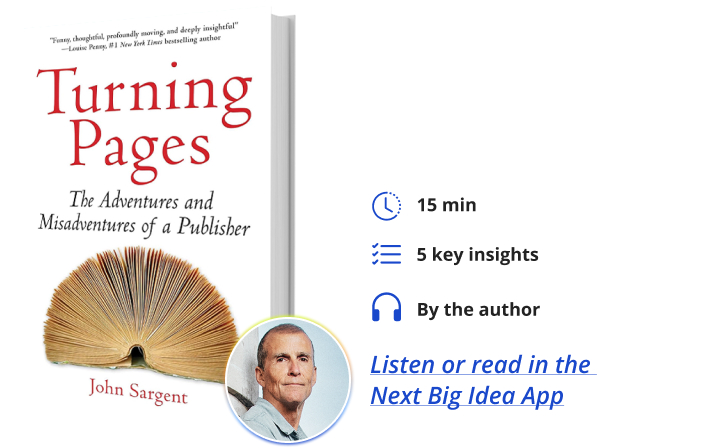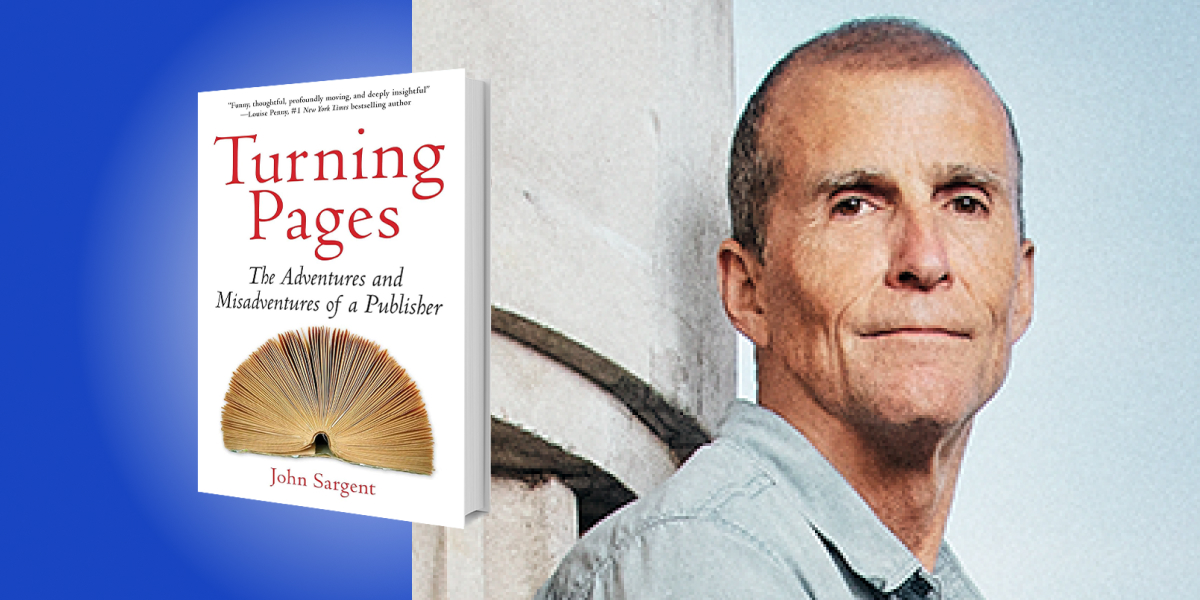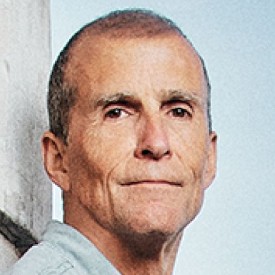John Sargent is the former CEO of Macmillan Publishers. Prior to working at Macmillan, he also worked in different departments at Simon and Schuster, DK Publishing, and was previously the CEO of St Martin’s Press. He has spent a total of 40 years in publishing. He is currently the chairman of The Ocean Conservancy.
Below, John shares five key insights from his new book, Turning Pages: The Adventures and Misadventures of a Publisher. Listen to the audio version—read by John himself—in the Next Big Idea App.

1. At work, there should always be fun.
Publishing is a creative business, and it is a group exercise. It takes lots of people, working together, to publish a book well. It became clear to me early in my career that people do a better job when they are having fun, no matter the size of the group or the task at hand. Having fun does not happen by itself, and it does not happen through structure or process. You can not measure fun, nor the productivity that it enhances.
To increase the level of fun in an organization, it must be a goal, set like any other goal. Accomplishing goals is fun. Giving, or receiving, kindness is fun. Being playful is fun. But I think being curious and adventurous are the best ways to increase fun in an organization.
When I started at Macmillan, I struggled to bring more fun into the company. At the time we were publishing a book by LL Cool J. He is a charismatic guy, with lots of energy, so we asked him to come to a sales conference. While he was there, I set up a situation that might cause him to produce some of that remarkable energy for us. He did, and in the spur of the moment, he encouraged everyone to do something that was completely out of their comfort zone. The fun was palpable. That evening became part of the lore of the company.
Two decades later, Donald Trump forced all of Macmillan to perform well under tremendous pressure. In trying to stop the publication of a book that portrayed him badly, he united us in a just cause. That struggle was a different and more rewarding kind of fun.
What I learned is that fun can be contagious. If you strive to have fun, everyone around you will be more likely to have fun.
2. Nobody wins afraid of losing.
It is generally better to focus on the adventure, not on the consequences. At some level, in business and in life, success is about taking risks.
“Trying something new, and taking risks, is adventurous.”
There are often good and smart reasons not to take on a difficult challenge, but fear of failure should not be one of them. Failing is damn unpleasant, but that does not mean we should avoid hard things. Trying something new, and taking risks, is adventurous. It is true at every scale, from having the nerve to ask a difficult question of a new acquaintance, to saying no to a powerful adversary.
3. Know where you come from.
Writing a book about myself, and my life, forced me to live in my past. The retrospective view allowed me to grasp more fully some of the forces that drove my experiences. I suspect this is the same for everyone.
I grew up on a Wyoming cattle ranch. It was a relatively unique experience, since Wyoming had only 300,000 human inhabitants back in those days. There were a lot more cows in my hometown than people. Being a Manhattan-based publishing executive often didn’t fit naturally with my self image. Though I did buy some fine Italian suits in my early years, I always tried to be true to who I was. I hid from the history of my extraordinary publishing family, but never from the experiences that formed me.
I discovered that trying to be something you are not just makes things harder. It makes things harder for you, and for everyone else.
4. Find the right thing, then do the right thing.
In my early years in business, I had tremendous ambition. That ambition gave me the urge to play the game at a high level, and make it to the top. If you can’t be President of the United States, be president of something. The bigger that something is, the better. With age came a more nuanced view of the world, or maybe I just got some of the ambition kicked out of me.
“The difficult part of doing what is right is determining what the right thing is.”
As I grew older, I became more concerned with doing the right thing. This could be the right thing for the publishing business, or the right thing for an employee in need. The difficult part of doing what is right is determining what the right thing is. Sometimes it is obvious, just sitting there staring you in the face. But in my experience, it is usually a bit cloudy, more gray than black or white. At some point I started to make decisions based on what I thought was right, even though I knew that would be a subjective standard.
It is hard to know if trusting my ethical compass and acting outside the profit-driven framework led to better decisions. It did get me in hot water with the DOJ, and it did get me fired. But it also created a positive culture at work, and it made it easy to hire great talent. Looking back, I wouldn’t do it any other way.
5. It is amazing how many deeply interesting people publish, sell, or write books.
All of these people have different things to tell us, many of which we might disagree with. There is always something to learn if we listen.
To listen to the audio version read by author John Sargent, download the Next Big Idea App today:
































